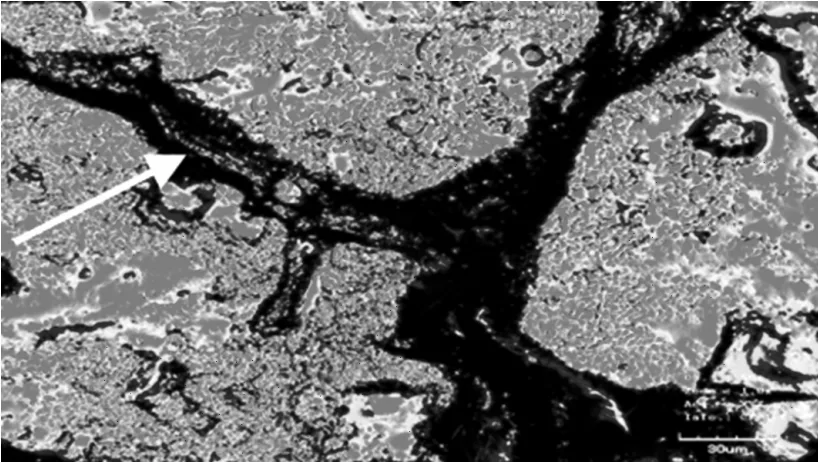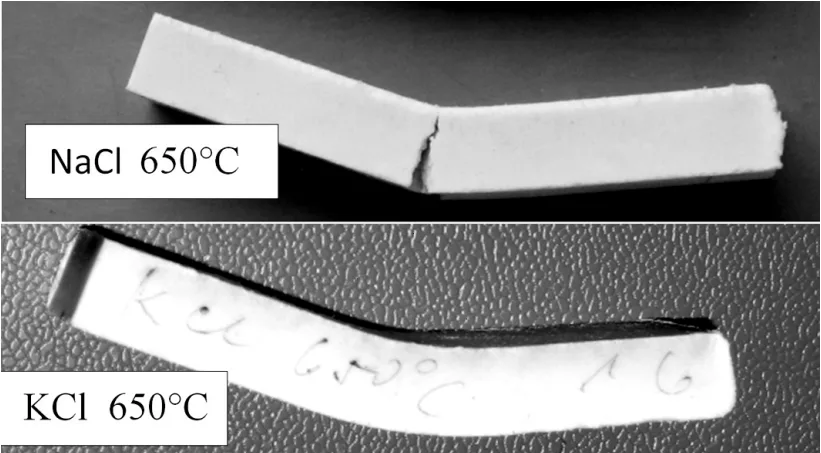This article introduces the paper "DEVELOPMENT OF FOUNDRY CORES BASED ON INORGANIC SALTS" presented at the Materials and technology
1. Overview:
- Title: DEVELOPMENT OF FOUNDRY CORES BASED ON INORGANIC SALTS
- Author: Petr Jelínek, František Mikšovský, Jaroslav Beňo, Eliška Adámková
- Publication Year: 2013
- Publishing Journal/Academic Society: Materials and technology / Materiali in tehnologije, MTAEC9, 47(6)689(2013)
- Keywords: salt cores, inorganic salts, die casting, PUR Cold-Box, Warm-Box, core solubility and stability

2. Research Background:
- Social/Academic Context of the Research Topic:
The use of salt cores in foundry technology dates back to the 1970s, with significant expansion in the 1990s for mass production, particularly in diesel engine pistons. Salt cores made from cooking salt (NaCl) are used for creating holes in castings, offering advantages like solubility in water for closed-loop production and dimensional accuracy. - Limitations of Existing Research:
Existing salt cores, especially those made from cooking salt (NaCl), exhibit relatively low strength, which limits their application in high-pressure die casting. Sand cores using PUR COLD-BOX technology, while capable of creating intricate shapes, suffer from low strength, sand penetration into the alloy, and poor collapsibility, especially with newer die-casting technologies that lower alloy injection temperatures. Metal cores are also used but are complex and costly. - Necessity of the Research:
To meet the demands of more complex and shape-demanding cores in high-pressure die casting, there is a need to improve the mechanical properties of salt cores, particularly their primary and secondary strengths. More efficient core production methods beyond compacting are also being explored.
3. Research Purpose and Research Questions:
- Research Purpose:
The aim of this study is to describe the possibilities of using salt cores for gravity, low-pressure, and high-pressure die-casting technology. The research focuses on evaluating the utilization of salt cores by determining primary, secondary, and final residual strengths. Furthermore, it aims to develop composite salts with enhanced mechanical properties and investigate their solubility and reclamation potential for environmentally friendly closed-cycle use. - Key Research Questions:
The paper does not explicitly list research questions but implicitly explores:- How do different compacting conditions affect the strength of salt cores?
- What is the influence of inorganic salts and their mixtures on core strength?
- How do salt-crystal shapes and granulometry impact core properties?
- Can composite salts with additives improve core strength?
- What are the hydration and dissolution kinetics of these cores in water?
- Research Hypotheses:
The paper does not explicitly state hypotheses, but the research is based on the premise that:- High-pressure compacting and composite salt formulations can improve the mechanical properties of salt cores.
- Additives can enhance the strength of salt cores by modifying the salt matrix.
4. Research Methodology
- Research Design:
The research is experimental, focusing on the development and testing of salt cores under various conditions. - Data Collection Method:
Bending strength was measured using an adapted universal apparatus LRu-2e (MULTISERVIS MOREK, PL). Primary strengths (cold strength), hot strength (at 650 °C), and residual (secondary) cold strength after thermal exposure (650 °C, 1 h) were measured. Density measurements were also conducted. - Analysis Method:
Quantitative analysis of bending strength and density data was performed to evaluate the effects of compacting pressure, salt type (KCl, NaCl), moisture content, storage time, and composite salt formulations. Microscopic analysis of grain boundaries and fracture surfaces was used to understand the material behavior. - Research Subjects and Scope:
The research subjects were salt cores made from chemically pure KCl and NaCl, and composite salts with additives. The scope included investigating the influence of:- High-pressure compacting (30-160 x 10³ N)
- Moisture content (0.37% - 0.85%)
- Storage time (up to 8 days)
- Annealing temperature (650 °C)
- Different compression tensions (28 MPa, 56 MPa, 87 MPa)
- Additives in composite salts (up to 30% of weight).
5. Main Research Results:
- Key Research Results:
- Bending strength of KCl cores increased with compacting force, reaching up to 6.5 MPa. Density also increased simultaneously.
- Moisture content in salts affects initial strengthening, but its influence balances out over longer storage times.
- Cores from KCl exhibited higher primary strengths than NaCl cores under the same compacting conditions and densities.
- KCl cores showed a plastic state at 650 °C, while NaCl cores cracked at the same temperature.
- Crystal shape differences were observed: KCl had cubic crystals, while NaCl had oval crystals.
- Composite salts with additives improved core strengths, especially hot strength. Additives A and B (up to 10%) were most effective.
- Statistical/Qualitative Analysis Results:
- Figure 2: Shows the course of KCl compacting with different moisture contents. "After a longer storing time the influence of different moisture contents is balanced".
- Figure 3: Illustrates the influence of compression power on density and bending strength of KCl samples. Bending strength grows with compression power up to 6.5 MPa.
- Table 1: Compares primary strengths of KCl after squeezing with different compression tensions, showing increased bending strength and density with higher compression.
- Table 2: Compares primary strengths of KCl after squeezing with different compression tensions after annealing.
- Table 3: Compares primary strengths of KCl and NaCl cores at constant compression power, showing KCl cores have higher strength.
- Table 5: Presents strengths of composite salts, indicating improved strengths with additives, especially for hot strength.
- Data Interpretation:
- High compacting pressure is crucial for achieving higher strength in salt cores.
- KCl is a more suitable base salt than NaCl for high-strength salt cores due to its crystal structure and behavior at high temperatures.
- Composite salts with specific additives can significantly enhance the mechanical properties of salt cores, making them more suitable for demanding die-casting applications.
- Figure Name List:
- Figure 1: Grain boundaries after the KCl squeezing
- Figure 2: Course of the KCl compacting with different moisture contents
- Figure 3: Influence of compression power on density and bending strength of KCl samples
- Figure 4: Plastic deformation of salt samples
- Figure 5: KCl crystals
- Figure 6: NaCl crystals
- Figure 7: Crack in the NaCl structure
- Figure 8: Compact structure of KCl


6. Conclusion and Discussion:
- Summary of Main Results:
The study demonstrated the feasibility of using salt cores in die casting, particularly with composite salt mixtures and high-pressure compacting. KCl-based cores showed superior strength compared to NaCl. Composite salts with additives, especially A and B up to 10%, significantly improved core strengths, particularly hot strength. Achieved residual bending strengths of 8-9 MPa for composite cores suggest potential for mechanical core working. - Academic Significance of the Research:
This research contributes to the understanding of the factors influencing the strength of inorganic salt cores, including compacting pressure, salt type, crystal structure, and composite formulations. It provides valuable data on primary, hot, and residual strengths, crucial for die-casting applications. - Practical Implications:
The findings suggest that composite salt cores produced under high pressure offer a viable alternative for demanding die-casting applications, potentially replacing less environmentally friendly or less effective core technologies. The improved hot strength and residual strength open possibilities for using these cores in high-pressure casting and enabling mechanical core working. - Limitations of the Research:
The paper does not explicitly detail limitations, but implicitly, the research is focused on specific salts (KCl, NaCl) and a limited set of additives. Further research is needed to explore a wider range of salt mixtures, additives, and production methods for broader industrial application.
7. Future Follow-up Research:
- Directions for Follow-up Research:
The paper suggests that "Shooting the salt cores with inorganic or organic binders in hot-core boxes (WARM-BOX) is a topic for the next research". This indicates future research should focus on exploring warm-box technology for salt core production, potentially leading to more extensive applications of wasteless foundry technology. - Areas Requiring Further Exploration:
Further exploration could include:- Optimization of composite salt formulations and additive types.
- Investigation of warm-box core shooting for salt cores.
- Testing of core collapsibility and removal in actual casting trials.
- Economic and environmental assessments of large-scale implementation.
8. References:
- ¹ P. Stingl, G. Schiller, Leichte und rückstandfreie Entkernung, Giesserei Erfahrungsaustausch, (2009) 6, 4-8
- ² M. Dobosz st. et. al., Development tendencies of moulding and core sands, China Foundry, 8 (2011) 4, 438-446
- ³ F. Heppes, Combicore, Giesserei, 98 (2011) 8, 69
- ⁴C. R. Loper et al., The use of salt in Foundry Cores, AFS Transaction, 85-82 (1985), 545-560
- ⁵ P. Jelínek et. al., Ovlivňování pevnostních charakteristik solných, ve vodě rozpustných jader, Slévárenství, 55 (2012) 3-4, 85-89
9. Copyright:
- This material is Petr Jelínek, František Mikšovský, Jaroslav Beňo, Eliška Adámková's paper: Based on DEVELOPMENT OF FOUNDRY CORES BASED ON INORGANIC SALTS.
- Paper Source:
This material was summarized based on the above paper, and unauthorized use for commercial purposes is prohibited.
Copyright © 2025 CASTMAN. All rights reserved.